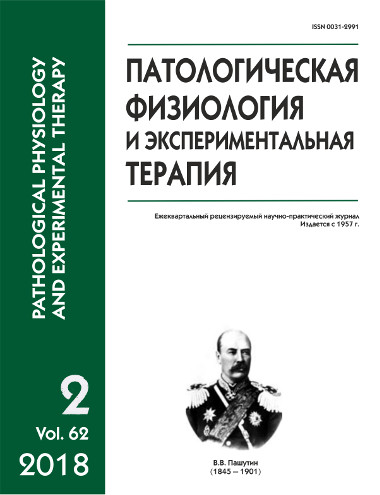The role of polymorphous variant G-105A of SEPS1 gene in the initiative of premature birth
Abstract
Сauses of spontaneous preterm birth are not fully understood. Risk factors for spontaneous preterm birth include obstetric and gynecological anamnesis, complications of current pregnancy, presence of infectious complications, genetic predisposition, social reasons, accompanying illnesses. One of these risk factors may be the polymorphic variant of the G-105A of the selenoprotein S (SEPS1) gene, which can be considered as a candidate for the role of a new marker of inflammation. The aim of the study was to study the association of the polymorphic variant G-105A of the SEPS1 gene with the risk of premature birth in women of the European population in Moscow. Methods. The study included 33 women with preterm delivery at terms from 23.5 to 37 weeks of pregnancy and 29 women with full term pregnancy (control group). The study was conducted after obtaining informed consent from patients. Genotyping of polymorphic variant G-105A of SEPS1 gene was carried out by PCR-RFLP analysis. Results. In the study, it was shown that the incidence of allele A of polymorphic variant G-105A of the SEPS1 gene is 2.0 fold higher in women with premature birth than in the control group. For the first time, statistically significant differences in the genotype frequencies of the polymorphic variant G-105A of the SEPS1 gene were established between the control and the study groups (χ2 = 3.921, p = 0.0477 and according to the Z (t = 2.07, p = 0.0431) test). Conclusions. Such findings can assume that polymorphism of gene SEPS1 G-105A may be a potential gene marker for preterm birth.
Downloads
References
2. Allen-Daniels M. J., Serrano M. G., Pflugner L. P., Fettweis J.M., Prestosa M.A., Koparde V. N. et al. Identification of a gene in Mycoplasma hominis associated with preterm birth and microbial burden in intraamniotic infection. Am. J. Obstet. Gynecol. 2015; 212 (6): 779.e1-779.e13.
3. Radsinski V.E. Obstetrics. [Akusherstvo]. GEOTAR-Media. 2015. (in Russian)
4. York T.P., Eaves L.J., Neale M.C. Strauss J.F. The contribution of genetic and environmental factors to the duration of pregnancy. Am. J. Obstet. Gynecol. 2014; 210(5): P. 398 – 405.
5. Huajie Mao, Ruifang Cui, Xiaochun Wang. Association analisis of selenoprotein S polymorphisms in Chinese Han wich susceptibility to gastric cancer. Int. J. Clin. Exp. Med. 2015; 8(7): 10993-10999.
6. Hart K., Landvik N.E., Lind H. Skaug V, Haugen A and Zienolddiny S. A combination of functional polymorphisms in the CASP8, MMP1, IL10 and SEPS1 genes affects risk of non-small cell lung cancer. Lung Cancer. 2011; 71(2): 123-129.
7. Noguchi T., Sado T., Naruse K. Evidence for Activation of Toll-Like Receptor and Receptor for Advanced Glycation End Products in Preterm Birth. Mediators of Inflammation. 2010; 2010: e490406.
8. Langmia I.M., Apalasamy Y.D., Omar S.Z, Mohamed Z. et al. Impact of IL1B gene polymorphisms and interleukin 1B levels on susceptibility to spontaneous preterm birth. Pharmacogenet Genomics. 2016; 26(11): 505-509.
9. Yang X., Peng W., Zhu L.N, Zhang X., Wang Y. Association between interleukin-1β C+3953T and genetic susceptibility to spontaneous preterm birth: a case-control study. Zhongguo Dang Dai Er Ke Za Zhi. 2016; 18(11): 1123-1129.
10. Shibata T., Arisawa T., Tahara T., Ohkubo M., Yoshioka D., Maruyama N. et al. Selenoprotein S (SEPS1) gene -105G>A promoter polymorphism influences the susceptibility to gastric cancer in the Japanese population. BMC Gastroenterol. 2009; 9:2.
11. Wang Y., Yang X., Zheng Y., Wu Z.H., Zhang X.A., Li Q.P., He X.Y., Wang C.Z., Feng Z.C. The SEPS1 G-105A Polymorphism Is Associated with Risk of Spontaneous Preterm Birth in a Chinese Population. PLoS One. 2013; 8(6): e65657.
12. Sun H.Y., Liu T.B., Wang Q.C., Wu W.Q., He Y.J. Single nucleotide polymorphism in the SEPS1 gene may contribute to the risk of various human diseases: a meta-analysis. Ann. Hum. Biol. 2016; 43(5): 469-479.






